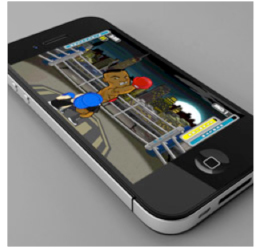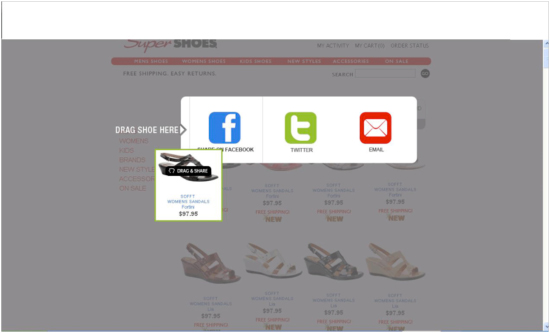Social Games as a Marketing Tool
Playing games via social media is a hugely popular activity in the U.S., where over 100 million people play games on social networks. On average the social gamer is 39 years old, and 54% male, versus 46% female. About 89 million Americans play games at least once a day. Social games thus present marketers with an irresistibly attractive opportunity to access these playing communities.
Marketers gain from participation in social gaming in a variety of ways:
- The popularity of gaming attracts traffic and thus creates a universe of “eyeballs” for messaging, such as display advertising, sponsorships or virtual goods.
- Game-based offers, like points, make an effective response driver, encouraging gamers to visit websites, receive coupons, share content and otherwise engage with brands.
- Game participation provides a neat way to capture data about users, whether through registration, cookie-based tracking, or aggregated behavioral and demographic statistics.
Games can also be used as a publicity generator. Sports stars, for example, are developing their own social games to raise their profile and engage with their fans. The mobile gaming network RockLive has created dedicated games on behalf of the boxer Mike Tyson, NFL stars Chad Ochocinco and Kevin Durant, and the Jamaican Olympic sprinter Usain Bolt. For many big stars, a dedicated game represents the next step in social media marketing beyond Twitter.
On the “Main Event” iPhone game, players box with heavyweight champion Mike Tyson, and then brag to their friends via social media about their knockout record.

Brands are starting to incorporate “game mechanics” into their websites, to stimulate and engage visitors, and deepen the brand relationship. Craig Ferrara, whose company Gigya provides gaming technology, advises marketers to follow 5 steps in adding game capabilities to their sites:
1. Use rewards and rankings to stimulate user-generated content on your site.
2. Make it easy to share content, and set up goals or ranking to encourage sharing.
3. Reward activity like “likes” on site content.
4. Enable social log-in via Facebook or Twitter, to connect activity at your site to users’ larger social profile.
5. Notify visitors of their achievements, like points accumulation, as they move around the site.
Adding social gaming capabilities to websites and campaigns has spawned the new marketing buzzword “gamification,” enabled by online platforms like Badgeville and Fanplayr. With Fanplayr, brands can set up coupon distribution programs with a gaming front end. Users win coupons and other offers after playing a roulette-type spinner game, a scratch-and-win type mystery game, or a “concentration” type game where they flip playing cards. The Fanplayr tool can be added to the brand’s website, or in email, display ads, mobile or social media.
Case study: How Shoeline.com raised sales 150% with a bingo game on Twitter
Shoeline.com’s sub-brand, Super Shoes, wanted to drive more product page views, which are essential to ecommerce sales conversion rates. Their success metric was the number of product pages viewed per visit.
Before creating a game-based campaign, Super Shoes upgraded its website, adding the ability to drag and drop product images on the site, to easily share links on social networks. When a visitor clicks on a product image, up pop icons for Facebook, Twitter and email, where visitors can drag the product image and update their social media profiles with the product information and a message. First-time users were asked for their network user names and passwords.
The drag-and-drop product shot stimulates social media sharing.

Then, they created “Twitter Bingo” game, where contestants could find hidden letters when they shared product information with their networks. For example, one Twitter message read:
I’m playing #twitterbingo w/ @supershoes_com. A must-have sandal with an oversized ‘BOW’ represents the letter ‘B’! http: //bit.ly/dBmA6o
The first person to find and tweet the 5 hidden letters won a free pair of shoes.
Shoeline launched the contest on a Friday, and began promoting it on Twitter the prior Wednesday.
Don’t forget to join us for #twitterbingo tomorrow! A free pair of beautiful new shoes could be all yours if you play!
Twitter requires marketers to follow certain rules when creating games and contests, and Shoeline communicated the rules through a series of 5 tweets prior to the launch.
The team expected the campaign to run for about an hour, but a winner tweeted the 5 hidden messages in less than 20 minutes. The results were more than satisfactory:
- An improvement in product page views per visit of 15% for the day.
- 152,000 impressions for tweets mentioning “super shoes bingo,” thanks to the tweets passed to the participants’ followers.
- 82,000 impressions for tweets with links back to the Super Shoes website.
- 83% increase in site traffic from Twitter during the day of the event.
- Improvement in sales from the Friday to the following Tuesday of 150%.
How long will the social games marketing trend last?
After rapid growth, the social games industry is showing signs of maturing, as game producers consolidate, and consumer usage growth rates slow. But for marketers, the game is just beginning.
Chart: Top Facebook games, May 2012
| Game | Developer | Daily active users (millions) |
| Words with Friends | Zynga | 7 |
| Texas HoldEm Poker | Zynga | 6.9 |
| CityVille | Zynga | 6.2 |
| Bubble Witch Saga | King.com | 6 |
| CastleVille | Zynga | 5.4 |
Source: Inside Social Games 2012


